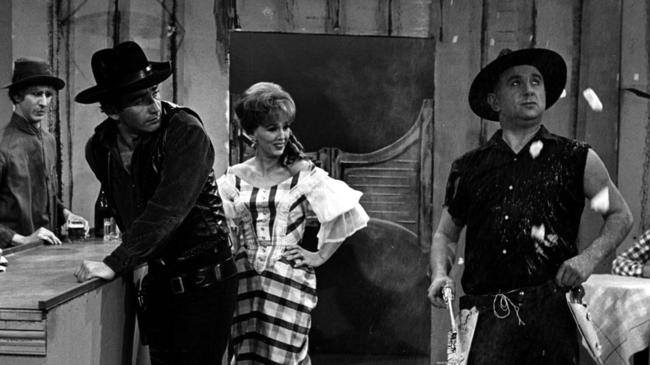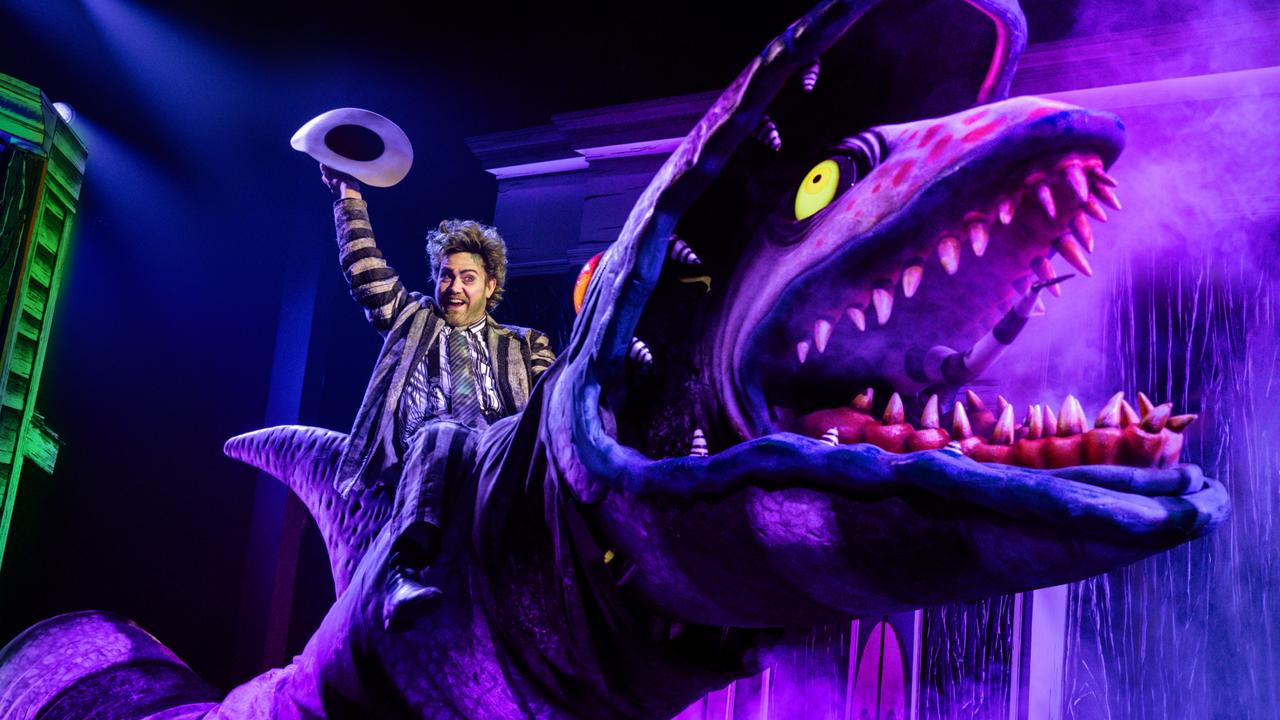Mavis Bramston broke the conservative rule of 1960s television
Until The Mavis Bramston Show, Australian television broadcasters were cautious not to offend audiences still wary of the medium.

In 1964, television, or “the idiot box” (as highbrow critics still called it), continued to be viewed with some suspicion even as its massive steel towers dominated big-city skylines.
At the time, there was much concern over what should be allowed to be broadcast, what was appropriate, and what was “generally acceptable in mixed company”. So the critical and popular success of Carol Raye’s often bawdy The Mavis Bramston Show surprised many, even the people involved in its creation, most of whom didn’t believe they would be employed past the pilot.
When she first suggested the idea of a revue-style, topical satirical program based on Britain’s hugely successful news-oriented That Was the Week That Was, to James Oswin, general manager of ATN7, he told her: “I’m not sure if Australians are ready to laugh at themselves.” But with her customary flair and style she persuaded him to finance the pilot, quickly finding Gordon Chater and Barry Creyton as Australia’s answer to Bernard Levin and David Frost, and was herself, a little reluctantly, persuaded to take on Millicent Martin’s role. And brilliant she was too. Looking at clips now, she is poised, elegant and razor sharp with a kind of questioning intelligence. She was an actor who knew precisely how to pitch a performance and her air of self-sufficient composure was as sexy as hell.
Originally called The Late Show, the name finally came from a well-held desire to parody what was known as “the cultural cringe”, our long-held belief that we were not as good at cultural matters as those in the old country. There was at the time a well-held resentment in theatrical circles at the unwholesome parade of largely unknown American and English actors coming to Australia and playing the leads in musicals and commercial plays.
The Bramston name apparently came from Melbourne actor and writer Jon Finlayson, who cited an old Melbourne theatrical legend that when an actor was a bit full of herself her colleagues would comment: “Oh, we’ve got a Mavis Bramston here.” So the show was originally built around this conceit of a supposed British performer and “star” of the show called Mavis Bramston, who, it turned out, was so crook that negotiations were halted but not before the show took her name.
She was played by a number of clever actors, including Maggie Dence, the running joke being that she appeared in the opening segment of each episode and thereafter disappeared, pulled off by an imaginary hook and dumped in the wings. (According to Rob Jonson and David Smiedt’s chronicle of Australian comedy, Boom-Boom, Dence, it seems, never actually performed sketches but became the show’s emblem in her black dress, black hat and cigarette holder opening a lot of petrol stations for the show’s sponsor, Ampol, and greeted like the Queen.)
The first show has a still hilarious sketch with a heavily made-up Noeline Brown, practically unrecognisable as Bramston in her audition tape. She appears at the top of a long staircase in a tattered evening dress held together at the back with pins and then clumsily dances down as she sings an atrociously awful off-key version of I Could Have Danced all Night. It’s still very funny and brings back terrible memories of when our stages were a kind of elephant’s graveyard for washed-up hacks from overseas.
The irony was, as comedian Graham Bond, who later created the wildly subversive Aunty Jack, pointed out: “Gordon Chater was English, Carol Raye was English and Barry Creyton wasn’t but he wanted to be. It was all terribly British and Noel Coward.”
Debuting on November 11, 1964, the show was a huge hit from the start, the first local comedy to be a national success, and ran weekly with some cast changes for about 40 weeks a year until 1968. It was a breakthrough that proved radical content, witty, racy and packed with those naughty double entendres, could cut through, even as it raised the fury of church groups. It was reported that before the first show ended the ATN switchboard was jammed.
As critic Bruce Elder wrote: “There was, throughout the industry, a huge sense of joy that something as cerebral as satire could appeal to mainstream commercial audiences.”
(You can watch clips from the show at Australian Screen, the NFSA website, drolly curated by Kate Mathews.)




To join the conversation, please log in. Don't have an account? Register
Join the conversation, you are commenting as Logout